ASUS at Computex 2016: The 10 Years of the Republic Of Gamers (ROG) Booth Tour
by Ian Cutress on June 22, 2016 8:00 AM EST
For anyone following our Live Blog coverage at Computex this year, ASUS had two large press events in quick succession in different parts of town. The first focused on the mobile lineup of launches, in an event called Zenvolution (playing off of the Zen line of products) where Jonney Shih played rapid fire with the new Zenbook 3, Transformer 3/Pro 3, ZenFone 3 devices, and a $599 home assistant robot called Zenbo. A few hours later, over the other side of town, was the annual Republic of Gamers event held in a local nightclub where Jonney Shih presented a sequence of 10th-anniversary products. The following day we made a bee-line to the show floor booth before the official opening time and went through a number of the major releases.
Marking 10 Years of ROG
We reported back in January and CES that ASUS was celebrating ten years of the Republic of Gamers brand, marking a now noticeably profitable success for the company and a very well-known fixture for users looking at gaming branded products. At the time, we headed up a round-table with two of AnandTech’s most recent former Senior Motherboard Editors (who both now work at ASUS) to go into detail about why ROG exists, what it means for users, and I also put to them a dozen or so questions from our readers.
However at the time, CES was a relatively minor show for ASUS: as a company, it was decided to cancel the intended press events and make Computex a little more special, as anything announced at CES would have launched after Computex anyway. That led the way for Computex being the primary focus for the announcements this year, not only for the Zen product line of smartphones and notebooks, but also for the Republic of Gamers. We saw the announcement of a mix of 10 Year anniversary products, prototypes, and updates over previous generations of products. ASUS also wanted to make it special, and invited a series of ‘super fans’ to the show as well as a number of gaming teams that ASUS sponsors.
Among the super fans were a few overclockers, one of which is a former team member of mine in the most prominent overclocking leagues, as well as an ROG user who had acquired all (or almost all) of the ROG motherboards that have ever been released, with a total expenditure exceeding $10,000. He also had a few GPUs for good measure.
The ASUS ‘10 Years of ROG’ press event felt somewhat eerie: if someone in attendance had no idea of what ROG was, it felt almost like a cult leader of an army, and sure enough ASUS’ Chairman, Jonney Shih, came out in a knee length custom leather jacket, cap, and the title ‘ROG Commander-in-Chief’. Follow lots of low-frequency bass lines, a laser and smoke show, and technology reveals by ROG Generals, and you might not realize that this is actually just a product launch. When it has one, every brand enjoys a loyal following when users invest their money into that brand or product line, and it was clear that ASUS enjoys extrapolating the ideals of their following to a user army-like status.
Nonetheless, the product announcements were thick, fast, and lacking in just enough detail to force the press to crowd the limited samples on hand on display in the nightclub. At the time when the press event finished, Billy went for a stroll around the new products (as all the other media charged the demonstration area) while I closed up a few emails, but we waited until the following day and was able to browse the ASUS ROG Booth before the official opening time and before the mêlée of other press descended on what felt like the biggest booth at the show.
We saw a number of new products, and a big part of the show in general was the attention to detail by users who modify cases (or modders for short) that companies commission special show builds for. ASUS had a number of these on display as well, ranging from elegant to crazy. This includes custom system-integrator and retailer designed systems, such as the newest tri-loop cooled 8Pack designed system claiming to be the fastest overclocked system you can buy in the world. We interviewed 8Pack at an OverclockersUK event a couple of years ago, which you can read here.
So, in no particular order…


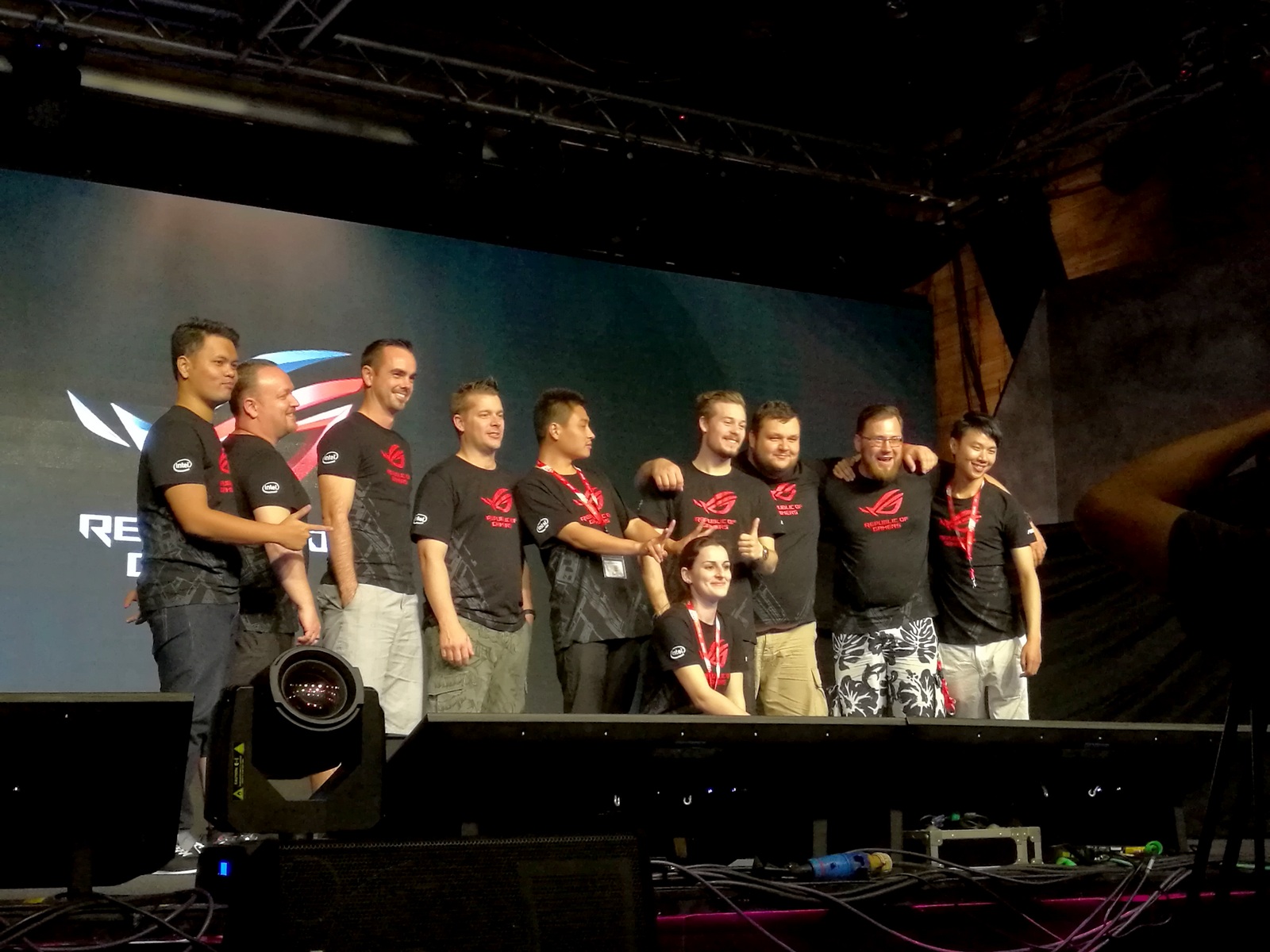
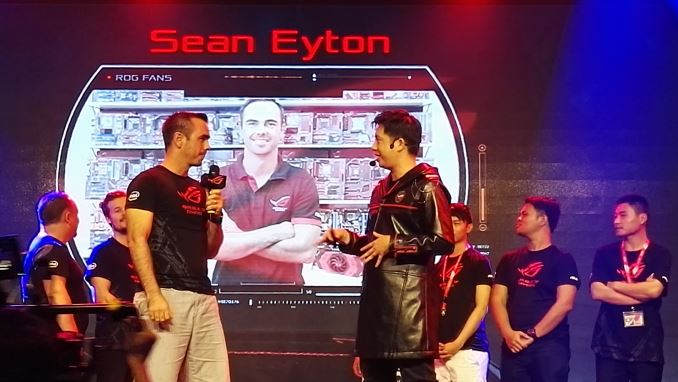
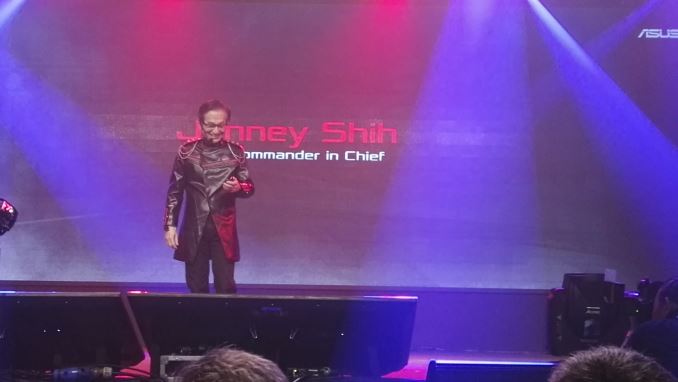
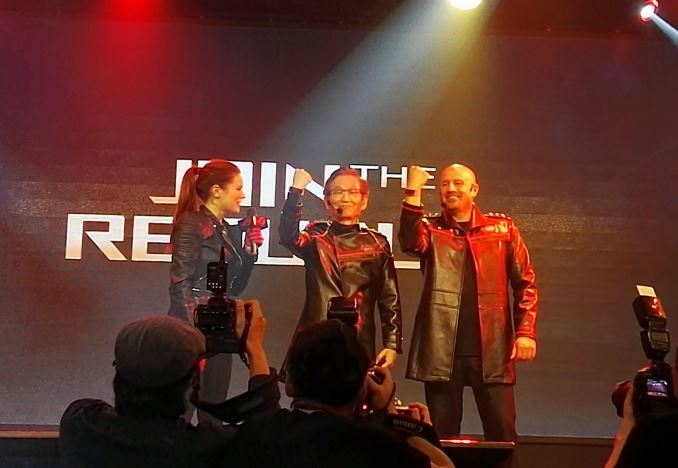
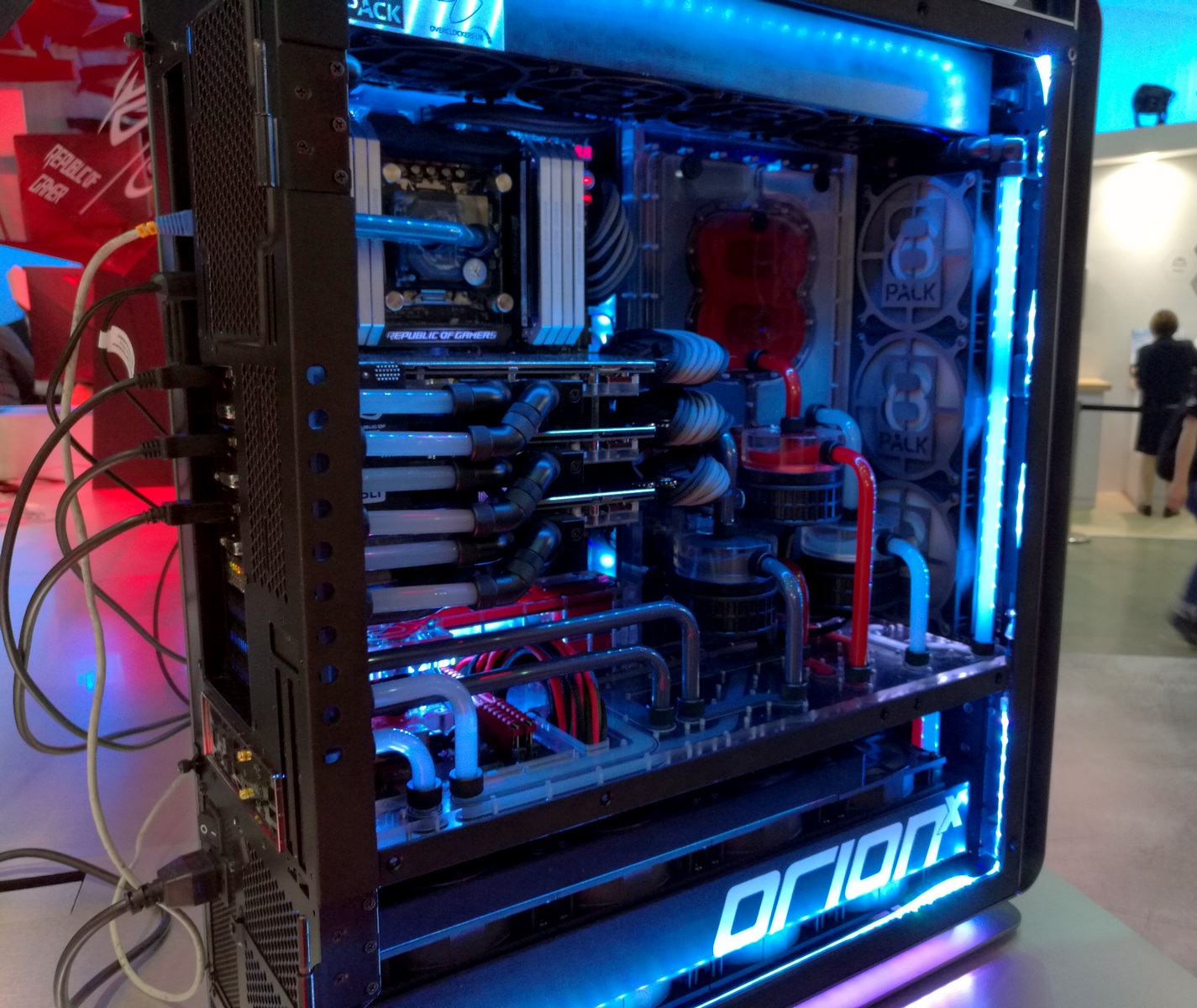









43 Comments
View All Comments
A5 - Wednesday, June 22, 2016 - link
End users who are buying Broadwell-E are almost always doing it for 3+ way SLI reasons, which pretty much forces you into full ATX.They presumably have research (or data from the past) that says they will not sell enough mATX boards with HEDT chipsets to be worth the engineering effort.
Bragabondio - Wednesday, June 22, 2016 - link
Well now that Nvidia would not support more than 2 cards SLI (except for benchmarking applications) the argument for 3 way SLI becomes moot. (micro ATX supports 2 way SLI). Starting to think we will be stuck with 4 core CPUs for the next 5+ years unless ZEN is a huge success.Sushisamurai - Wednesday, June 22, 2016 - link
uhhh... Nvidia still has 3 way/4 way SLI - they've only restricted SLI requirements to PCIe x8, versus AMD's crossfire x4; presumably to maintain a performance target. With "consumer" lines of Intel CPU's, you only get max 20 PCIe lanes (correct me if I'm wrong), allowing only 2 way SLI. HEDT chips have 28 to 40 to 40. Hence, 3 way to 4 way SLI is pretty much restricted purely to HEDT. Anandtech had an article about CPU/PCIe bottleneck with SLI/CF a ?few years back. If memory serves me correctly, PCIe x4 bottlenecks modern high end GPU's, and an i5 can run 2 high end GPU's without bottlenecking - it is when you go 3 cards you'll need an i7 for gaming (assuming you have enough lanes), and HEDT (my opinion now) if you want 4 cards (due to PCIe lanes, and enough cores to feed the cards)Bragabondio - Wednesday, June 22, 2016 - link
Correct until GTX 1070&1080 were introduced. Starting with the GeForce GTX 1080, Nvidia is discontinuing official support for 3-way and 4-way multi-GPU SLI setups.http://www.pcworld.com/article/3071332/hardware/it...
Sushisamurai - Thursday, June 23, 2016 - link
Oh that is messed up. I've read their white paper, didn't even know they trashed the enthusiast key option. Wow that's super unfortunate.alphasquadron - Wednesday, June 22, 2016 - link
"So I don't understand why manufacturers don't want my money?"I think they do but as stated in the article:
"The three major form factors for custom build personal computers, in order of popularity, are ATX, followed by micro-ATX and then mini-ITX."
I too am waiting for an external dock that I can plug my laptop into and achieve 80-90% of performance of a full size desktop. Whoever makes this will have grabbed two markets. Those who want a gaming desktop and are okay with huge cases (usually younger) and professionals like me who want the same but would never get a gigantic case. If we can get an external dock that tries to be compatible with most laptops as much as possible without looking like an eyesore and can deliver close to desktop performance, it would be an instant buy for a lot of people. As you now have a laptop and desktop. Though I think that this would come from a laptop manufacturer as if it was very well made and successful, I would think the market that would buy a desktop over a laptop for 10% gain in performance would be very small.
Bragabondio - Wednesday, June 22, 2016 - link
Guess I have to give my dream for small but super powerful desktop PC and embrace the reality that laptop/surface device + dock is the future for the middle aged professional :)Bragabondio - Wednesday, June 22, 2016 - link
One more thing. The ATX may be indeed most popular size but that is mostly due to tradition not function as 99% of the consumer market don't need/use all the slots and space of a larger ATX case. That is why I like project Avalon but nobody knows if it ever would become a reality.Ananke - Wednesday, June 22, 2016 - link
Unfortunately, in the current moment of the high tech industry, "middle age" is very inappropriate. Companies think their teen- and twenty-year old customers have many thousands of disposable income , and cater to them exclusively. Besides, young people buy easily obsolete or inferior tech, since they don't have comparison base :):). The only problem for the tech industry is, that younger population usually has no disposable income /and that's kinda universal truth over many centuries/ and just doesn't buy because it can't pay.Bragabondio - Wednesday, June 22, 2016 - link
well said Ananke! Plus, as a coup de grace now we have to deal with gazillion of RGB lights inside our cases - if I wanted a freaking X-mas tree inside my case I would have bought one ! :)